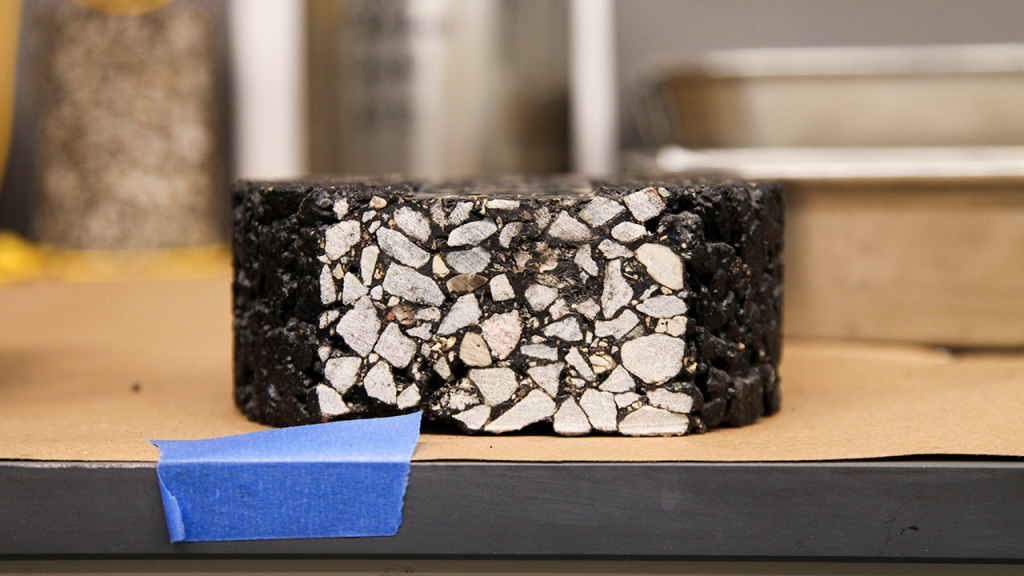
The Plastics Pathway, an initiative of Pollution Probe, the Toronto Zoo, and GreenMantra Technologies, has reached another important milestone with the paving of a section of the on-site path using asphalt-containing materials produced from recycled plastic. The 470 square metres of newly paved pathway showcases a circular solution for plastic, incorporating the equivalent of 100,000 plastic bags worth of post-consumer recycled plastic material. Mixing the asphalt with GreenMantra's specialty polymer contributes to a reduction in the amount of plastic waste that ends up in landfill while increasing the durability of the pavement and extending its life.
Paving was made possible through a collaborative effort of the project partners, Green Infrastructure Partners Inc. (GIP), who formulated the recycled material and asphalt, and Vaughan Paving, who laid the asphalt on-site at the Toronto Zoo. Traditionally, asphalt relies on a mix of stone, sand, gravel, and bitumen that can break down from Canada's climate and traffic. Making use of GreenMantra's Ceranovus waxes will not only enhance the performance of the asphalt but the waxes are certified as 100 percent recycled content, produced from waste plastic including film, milk jugs, food containers, and grocery bags.
"We are incredibly excited about this new element of the Plastics Pathway as it showcases Canadian innovation and collaboration in finding feasible circular solutions for plastic," says Christopher Hilkene, chief executive officer at Pollution Probe. "Infusing the pathway at the Zoo with GreenMantra's product and asphalt formulated by GIP demonstrates that hard-to-recycle plastics can be given a new life that keeps them in the economy and out of landfills and the environment."
"An important role of your Toronto Zoo is sharing new ways of supporting conservation to our 1.3 million guests per year. Working with partners like Pollution Probe to install asphalt infused with recycled materials to the Plastics Pathway is a great example of how our team builds community literacy on new technology and approaches to improve our sustainability. Projects like this also help demonstrate solutions which are viable and applicable at a large scale," says Dolf DeJong, CEO at Toronto Zoo. "By incorporating recycled plastics into our pathway, we are highlighting a new path to address challenging-to-recycle plastics, a pivotal step to address this ongoing waste challenge."
"Being green starts with thinking green. And every step counts," says GIP's Steven Manolis, executive vice president of materials engineering. "This project should inspire all of us to reimagine how infrastructure can help make the world sustainable. Engineering high-performance, long-lasting infrastructure with recycled materials is truly a great approach to sustainability. If this approach was widely adopted, even small projects like Toronto's bike lanes could keep hundreds of millions of plastic bags from landfills."
"We are thrilled to see the next phase of the Plastics Pathway come to life. One of the important parts of this initiative for us is showcasing how waste plastics, when they're converted into additives, can not only increase sustainability but also add value and performance to an asphalt pavement," says Domenic Di Mondo, president at GreenMantra Technologies. "Pathways are the arteries that connect cities, businesses, and people across the globe. Partnerships like this one are critical to educating people on the innovative solutions to the waste plastic crisis that are available both locally and globally."
Made possible with support from the Province of Ontario, the Plastics Pathway highlights how plastic can be a beneficial resource when used, treated, and discarded responsibly and educates about the need to transition to a more circular approach to plastic use. Many elements of this exhibit are aimed at increasing public understanding and engagement, including those related to plastic in the environment, collection, sortation and recycling, sustainable design and recycled content, and upcycling. Real-life examples of hard-to-recycle plastics that have been transformed into new products, as seen in this paving phase, inspire finding practical, long-term solutions to the plastic pollution issue.


